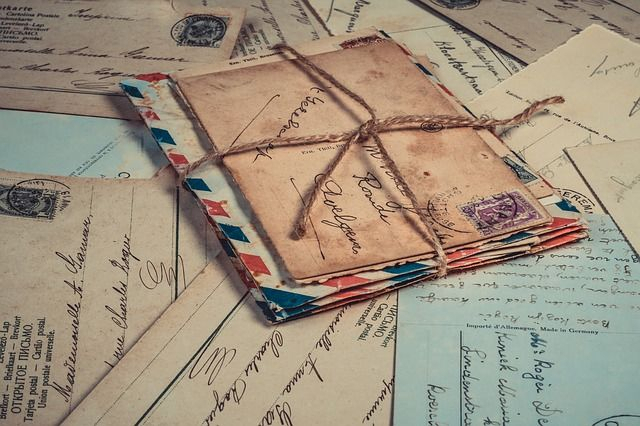RRI Encyclopedia – Postcards in Romania
A short history of postcards in Romania
Warning: Trying to access array offset on null in /home/web/rri.ro/public/wp-content/themes/rri/template-parts/content.php on line 53

Warning: Trying to access array offset on null in /home/web/rri.ro/public/wp-content/themes/rri/template-parts/content.php on line 98
Steliu Lambru,
25.10.2020, 14:00
There have
always been people for whom collecting postcards is their number one hobby.
Emerged towards the end of the 19th century, postcards quickly
became an effective means of communication. Today it’s become a miniature art
object, and a piece of our daily lives.
The first
postcards in Romania are dated back to the end of the 19th century. The
Law on postcards, sanctioned under Decree no. 789 of March 31, 1873, provided the
legal framework for sending these small greetings letters that people could
exchange when going on trips or visiting new places. Engineer Mihail Macri is a
philatelist and deltiologist. He told us how this small paperboard object
eventually took on more meaning in the lives of Romanians:
The first
postcards appeared in 1994. A number of three postcards were released to mark
the exhibition in Bucharest. The following postcards were issued in 1895 in
Wallachia and Moldavia. They were published in Constanța. One of them is known
to the public, but I am certain there were three of them, and they were all linked
to the inauguration of the bridge in Cernavodă. The postcard has a red
background, I’ve seen it in the private holdings of a collector from Constanța.
But other postcards were also issued in Timișoara or Arad, in cities in
Transylvania between 1892-1893. Some of them, which were edited in Vienna and
Budapest, have endured to this day.
Originally
Romania ordered postcards from Western countries. Not before long, however,
they started being printed in the country as well. Mihail Macri:
Romanian didn’t
have printing presses for postcards at the time. The first Romanian postcards
were printed in Germany and Austria. Then, the Romanian publishing houses in
the south, which would initially import postcards, started hiring illustrators,
as there was no shortage of themes. We had good photographers, and a wide
variety of themes. The first postcards were lithographies, and the print-run depended
on the limestone’s lifespan, which wouldn’t be very long. There are classic
postcards where you can notice huge differences in terms of quality – the image
starts fading and you can no longer see the general details. The whole image
starts to flow and certain parts of the image are faded. Then the limestone is
replaced. The minimum print-run was 500 issues, sometimes on more pleasant
topics. At different times the print-run would exceed 3,000, although this was
a very costly business.
People today are
accustomed to the standard format of the postcard: an image on the front, while
the back has a blank space where you can write a few words. The recipient is
written on the right, where you also need to place the stamp. Every object has
its history and evolution over the years, and postcards too have undergone
multiple transformations. Mihail Macri with the details:
The original postcard contained the written
text and a stamp, no image whatsoever. The recipient’s address was marked on
the front and the text on the back. With the advancement of photography and
printing technology in the 1880s, publishers had the idea of using lithography.
Photography was still in its early days. With the use of this procedure,
postcards became illustrated. At first, the picture would be displayed on the
left side on the front of the postcard, while the stamp sat on the right. The address
was written below while the text itself was on the back. Prices would differ
extensively, from a postcard with two lines and a stamp, or sometimes the
postcard would be sold without a stamp for 2-3 bani. Others were more
expensive, 1-2 lei. The difference was huge and not everyone afforded to be literate.
The lithography covered most of the front, save a small corner on the right, at
times in the upper corner, at others at the bottom, and very rarely on the
left, where you could write a few words. Other postcards had no textbox
whatsoever. In 1907 the Universal Postal Union decided that the back of postcards
should have separate areas for the text, the left, and for the stamp and the
address, on the right. This format has been preserved to this day.
Who were the
people usually sending postcards? Mihail Macri:
More often than
not people who knew how to write. In Transylvania, for instance, the priests used
to send postcards. The run was larger in this area for this reason. Yet the
correspondence was also active in large cities in Wallachia and Moldavia.
Romania’s foreign correspondence targeted France and Italy, where Romanians in
the southern principalities would go. Romanians in Transylvania corresponded
with Austria and Germany. Not everyone could write and not everyone had family
in Paris. These were usually wealthier people.
Romanian
postcards continued to keep track of eastern tendencies and technical advancements
that improved their quality. The advent of color photography also helped
influence the design of postcards, introducing an era of change.
(Translated by
V. Palcu)






























